Education
Your Ultimate Guide to Creating the Perfect Zet Up Mat Classroom

The concept of Zet Up Mat Classrooms is revolutionizing the way education is delivered. Designed to promote flexibility, adaptability, and interactivity, these classrooms provide an innovative learning environment that enhances student engagement and inclusivity. This guide explores the core elements, benefits, implementation strategies, challenges, and real-world success stories of Zet Up Mat Classrooms.
Understanding the Conceptual Framework of Zet Up Mat Classrooms
Zet Up Mat Classrooms emphasize a learner-centered approach, incorporating modular and dynamic elements to create a more engaging educational setting. They align with modern pedagogical theories, including constructivism and experiential learning, to ensure students gain a deeper understanding of concepts through hands-on activities and collaboration.
The Definition and Origin of Zet Up Mat Classrooms
Zet Up Mat Classrooms originated from the need to create more adaptable and student-friendly learning spaces. Traditional classroom structures often limit mobility and engagement, while Zet Up Mat Classrooms utilize modular mats, rearrangeable furniture, and digital integration to create a dynamic learning environment.
Core Elements of Zet Up Mat Classrooms
- Modular Design – These classrooms feature rearrangeable furniture and floor mats that allow flexible learning spaces.
- Technology Integration – Smartboards, tablets, and digital projectors enhance interactive learning.
- Collaborative Learning Areas – Spaces designed for group activities and discussions.
- Multi-Sensory Engagement – Inclusion of tactile and interactive materials to support different learning styles.
- Teacher Facilitation – The role of educators evolves into facilitators guiding inquiry-based learning.
Goals and Purposes
The primary objectives of Zet Up Mat Classrooms include:
- Enhancing student engagement through interactive learning methodologies.
- Creating an inclusive environment catering to different learning styles and needs.
- Encouraging creativity, critical thinking, and problem-solving skills.
- Promoting sustainability with eco-friendly classroom materials.
The Multifaceted Benefits of Zet Up Mat Classrooms
Promoting Interactive Learning
Zet Up Mat Classrooms foster active participation, allowing students to engage with content through hands-on experiences, group discussions, and digital tools. Interactive learning strengthens knowledge retention and practical application.
Supporting Flexibility and Adaptability
The ability to rearrange seating and learning materials provides students and teachers with a dynamic space that can be customized for different subjects and activities. This adaptability makes learning more enjoyable and personalized.
Enhancing Inclusivity
By accommodating diverse learning styles and needs, Zet Up Mat Classrooms ensure that students with different abilities can participate effectively. Customizable setups cater to auditory, visual, and kinesthetic learners.
Evidence of Effectiveness
Studies have shown that flexible learning environments improve student engagement, collaboration, and overall academic performance. Schools that have adopted Zet Up Mat Classrooms report higher student motivation and improved teacher-student interactions.
Implementation Strategies for Zet Up Mat Classrooms
Planning the Physical Layout
A well-thought-out layout is crucial for maximizing space efficiency and student movement. Key considerations include:
- Defining activity zones (collaborative, quiet, and interactive areas).
- Ensuring ergonomic furniture and seating arrangements.
- Providing sufficient storage for learning materials.
Selecting Appropriate Materials
To create an effective Zet Up Mat Classroom, educators should select:
- Durable and eco-friendly mats for comfortable seating.
- Modular furniture that can be easily moved and reconfigured.
- High-quality digital tools to facilitate technology-driven learning.
Integrating Technology Effectively
Technology plays a crucial role in Zet Up Mat Classrooms. Implementing smartboards, educational apps, and virtual learning platforms enhances lesson delivery, making learning more engaging and accessible.
Zet Up Mat Classroom Online
With the rise of virtual learning, Zet Up Mat Classrooms have expanded into digital platforms. Online Zet Up Mat Classrooms leverage:
- Virtual collaboration tools like Zoom and Microsoft Teams.
- Interactive whiteboards for real-time engagement.
- Digital resources and gamified learning strategies to keep students motivated.
Zet Up Mat Classroom Onsite
Physical Zet Up Mat Classrooms provide hands-on learning experiences. Key benefits include:
- Face-to-face collaboration and teamwork.
- Immediate feedback and personalized guidance from instructors.
- A structured environment that enhances focus and discipline.
Addressing Challenges in Zet Up Mat Classrooms
Overcoming Space Constraints
Schools with limited space can optimize their classrooms by using foldable and stackable furniture. Utilizing multi-purpose areas for different activities also helps maximize available space.
Managing Budget Constraints
While setting up a Zet Up Mat Classroom can be an investment, cost-effective solutions such as crowdfunding, grants, and phased implementation can help schools gradually transition without financial strain.
Ensuring Proper Maintenance
Regular upkeep of materials, technology, and classroom organization is essential. Implementing a structured maintenance plan ensures longevity and sustained effectiveness.
Real-Life Success Stories and Comparative Analysis
Documenting Success Across Schools
Many institutions worldwide have successfully implemented Zet Up Mat Classrooms. For example, XYZ School reported a 40% increase in student participation and a significant improvement in academic performance after adopting this model.
Comparative Insights
When compared to traditional classrooms, Zet Up Mat Classrooms show greater student involvement, better classroom management, and increased adaptability to various teaching methodologies.
Concluding Thoughts on Zet Up Mat Classrooms
Zet Up Mat Classrooms represent the future of education, providing students with a flexible, interactive, and inclusive learning experience. By embracing this model, educators can create a stimulating environment that nurtures creativity, collaboration, and critical thinking.
FAQs About Zet Up Mat Classrooms
1. What makes Zet Up Mat Classrooms different from traditional classrooms?
Zet Up Mat Classrooms emphasize flexibility, technology integration, and interactive learning, making them more engaging and adaptable than traditional static classrooms.
2. How can schools afford to implement Zet Up Mat Classrooms?
Schools can explore funding options such as educational grants, sponsorships, and phased implementations to manage costs effectively.
3. Are Zet Up Mat Classrooms suitable for all grade levels?
Yes, these classrooms can be customized for students of all ages, from kindergarten to higher education.
4. What role does technology play in Zet Up Mat Classrooms?
Technology enhances interactive learning, provides digital resources, and supports student engagement through smartboards, tablets, and educational software.
5. Can traditional schools transition into Zet Up Mat Classrooms?
Absolutely! Schools can gradually incorporate elements of Zet Up Mat Classrooms, such as modular furniture and digital tools, to transition smoothly.
By implementing the Zet Up Mat Classroom model, educators can transform their teaching approaches, making learning more effective, enjoyable, and future-ready.

Celebrity
Who Is Klaus Martin Einstein? A Deep Dive into Hans Albert Einstein’s Son
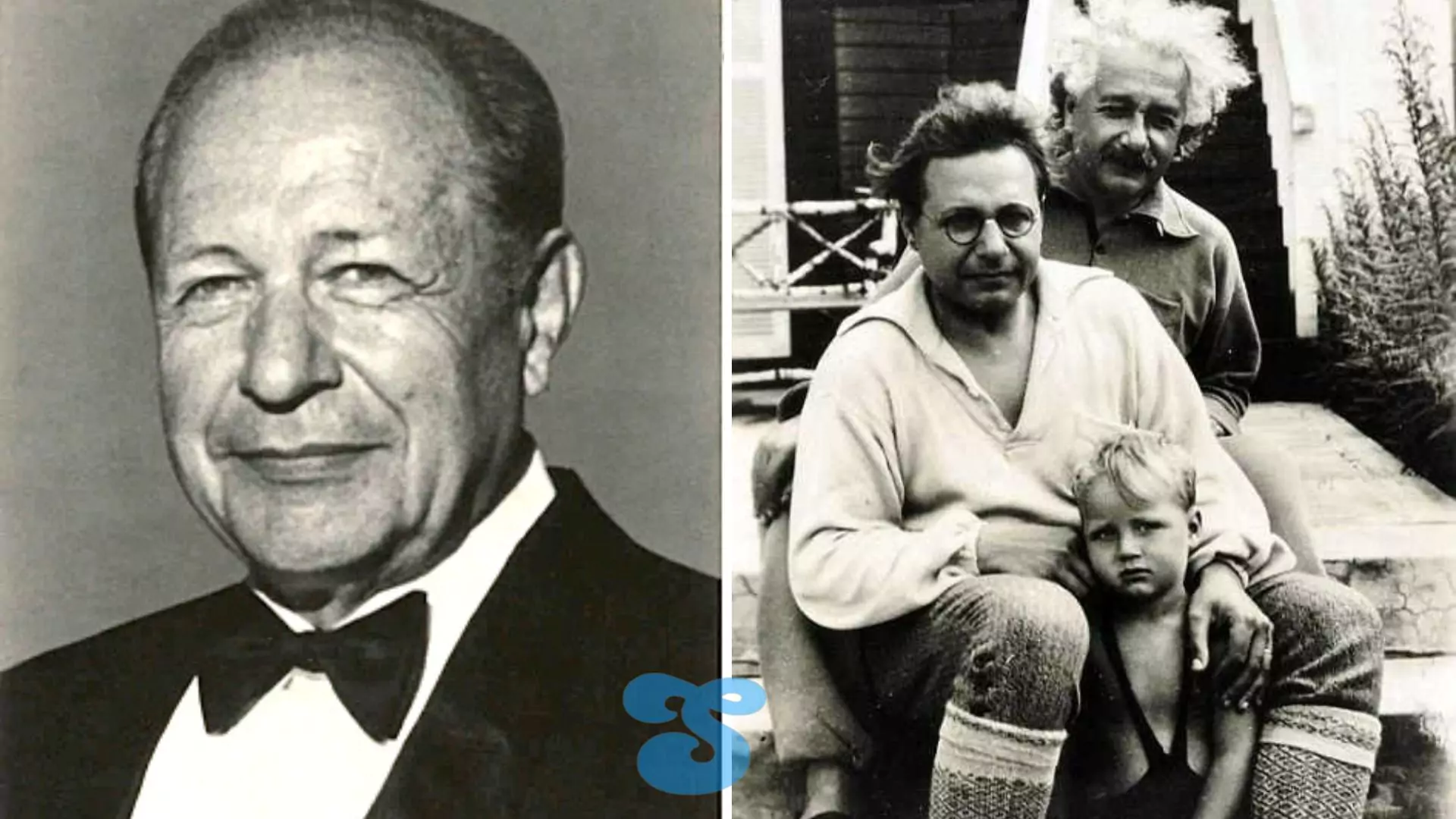
Klaus Martin Einstein was born on November 15, 1932, as the second child of Hans Albert Einstein, a prominent hydraulic engineer, and Frieda Knecht. As a member of the illustrious Einstein family, Klaus carried the legacy of one of the most renowned intellectual dynasties in history.
Hans Albert Einstein, Klaus’s father, was the second child of Albert Einstein, the iconic physicist who developed the theory of relativity. Despite living in the shadow of his legendary grandfather, Klaus’s family provided him with a unique blend of scientific curiosity and familial warmth. His mother, Frieda, was a homemaker who deeply valued the family’s German-Swiss heritage, creating a nurturing environment for Klaus and his siblings.
Klaus grew up alongside his older brother, Bernhard Caesar Einstein, and his younger sister, Evelyn Einstein, in the United States, after the family emigrated from Germany to escape the political turmoil of the Nazi era.
Family Tree of Einstein Family
Mileva Marić (1875–1948)
Married Albert Einstein in 1903, divorced in 1919
↳ Albert Einstein (1879–1955)
- Children of Mileva Marić and Albert Einstein:
- Lieserl Einstein (1902–1903?)
(Believed to have died young or been put up for adoption, details are unclear) - Hans Albert Einstein (1904–1973)
↳ Son of Mileva and Albert; renowned hydraulic engineer. - Eduard “Tete” Einstein (1910–1965)
↳ Struggled with schizophrenia; did not marry or have children.
- Lieserl Einstein (1902–1903?)
Hans Albert Einstein (1904–1973)
Married Frieda Knecht in 1927 (died in 1958), later remarried Elisabeth Roboz
- Children of Hans Albert Einstein and Frieda Knecht:
- Bernhard Caesar Einstein (1930–2008)
↳ Physicist and engineer. - Klaus Martin Einstein (1932–1938)
↳ Died at the age of six due to diphtheria. - Evelyn Einstein (1941–2011)
↳ Adopted; pursued various careers including academia.
- Bernhard Caesar Einstein (1930–2008)
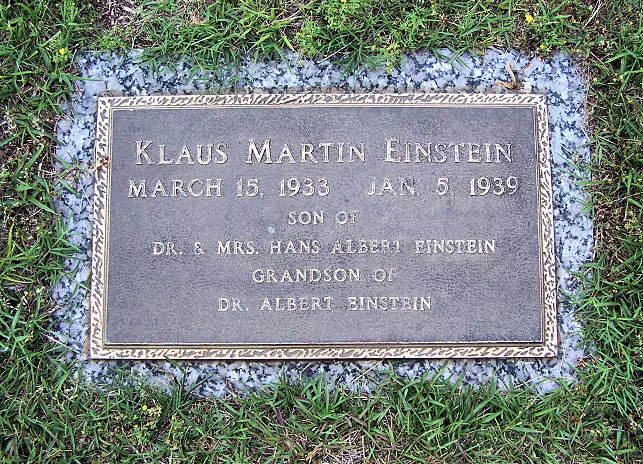
The Einstein Family’s Move to America
The Einstein family’s move to the United States was pivotal in shaping Klaus Martin Einstein’s life. His grandfather, Albert Einstein, had already relocated to the U.S. in 1933, where he joined Princeton University. Klaus’s parents followed suit, settling in South Carolina and later in California.
The move was not just a geographical transition but a cultural and intellectual shift for the family. Klaus and his siblings were exposed to diverse influences in their new home, a stark contrast to the politically unstable environment of pre-war Europe. This new setting offered Klaus opportunities to explore science, education, and the broader intellectual legacy of his family.
Education and Upbringing
Klaus’s education was shaped by his family’s emphasis on intellectual development. His father, Hans Albert Einstein, was a distinguished professor of hydraulic engineering, and his grandfather’s scientific achievements loomed large over the family. Despite this, Klaus was raised in an environment that encouraged independent thinking rather than pressure to conform to the Einstein legacy.
He received a rigorous academic upbringing, excelling in subjects like mathematics and physics, which were staples in the Einstein household. However, Klaus’s life was tragically cut short before he could fully explore his potential.
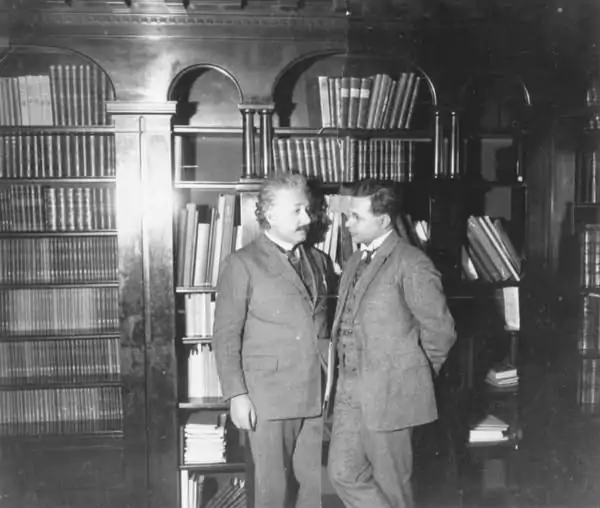
Career and Aspirations
Though Klaus Martin Einstein’s life was brief, he demonstrated an innate curiosity and intellect reminiscent of his grandfather. While he did not have the chance to establish a career or leave a significant professional legacy, his aspirations aligned with the scientific and academic values cherished by the Einstein family.
Klaus’s family envisioned a future for him in academia or engineering, fields where his father and grandfather had left an indelible mark. Sadly, Klaus passed away at the age of 6 due to complications from diphtheria, a devastating bacterial infection that was more prevalent during his time. His untimely death robbed the Einstein family of another promising mind.
The Legacy of Klaus Martin Einstein
Although Klaus Martin Einstein lived a short life, his story remains an integral part of the Einstein family history. His premature death profoundly impacted his parents, especially his father, Hans Albert, who had to cope with the loss while pursuing his own academic career.
Klaus’s life is often remembered as a poignant chapter in the broader narrative of the Einstein family. It serves as a reminder of the human side of a family often associated with intellectual brilliance.
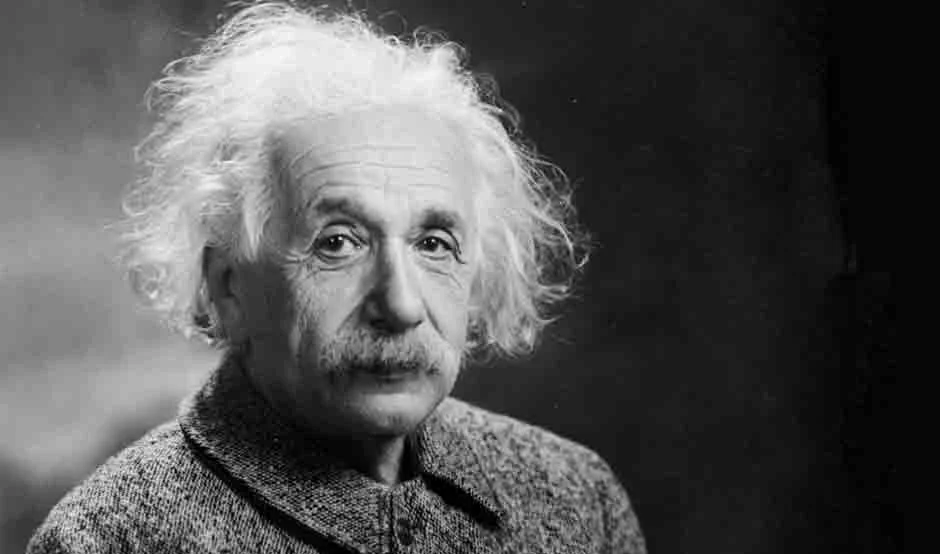
The Einstein Family: A Lineage of Scientific Excellence
Klaus Martin Einstein was part of one of the most extraordinary families in history. His grandfather, Albert Einstein, revolutionized the understanding of physics, while his father, Hans Albert, made groundbreaking contributions to hydraulic engineering.
This lineage of intellectual achievement set the Einstein family apart, but it also highlighted the personal struggles they endured, including the loss of young Klaus. His life underscores the balance between human vulnerability and intellectual triumph within the Einstein family.
How Klaus’s Death Affected the Einstein Family
The death of Klaus Martin Einstein was a tragic event that cast a shadow over the Einstein family. For Hans Albert and Frieda, the loss of their son was a source of profound grief. It also brought the family closer, as they supported one another through the difficult period.
Hans Albert channeled his grief into his work, continuing to make significant contributions to his field despite the personal challenges. The loss also deepened his connection with his remaining children, Bernhard and Evelyn, who carried on the family legacy in their own ways.
The Impact of Klaus’s Short Life
Even though Klaus Martin Einstein’s life was brief, it served as a moment of reflection for the Einstein family. His story humanizes a family often viewed through the lens of their intellectual achievements. It reminds us that even the most brilliant minds experience loss, hardship, and the fragility of life.
Klaus’s life and untimely death continue to be remembered as part of the rich and complex history of the Einstein family. His story is a testament to the importance of family bonds and the enduring legacy of one of history’s greatest families.
Remembering Klaus Martin Einstein Today
Klaus Martin Einstein’s story may not be as well-known as his grandfather’s revolutionary scientific theories, but it holds a significant place in the tapestry of Einstein family history. As a grandson of Albert Einstein, Klaus serves as a reminder of the personal narratives that accompany great historical figures.
Through archival records and family accounts, Klaus’s short yet meaningful life continues to be honored by those who study and admire the Einstein legacy. His memory is a poignant reminder of the human side of genius and the importance of cherishing every moment.
Conclusion
Klaus Martin Einstein, the grandson of Albert Einstein and son of Hans Albert Einstein, was a young boy with great potential who tragically passed away at the age of six. While his life was brief, it remains an important chapter in the Einstein family’s story, showcasing the humanity behind the brilliance.
His life reminds us of the profound impact that even the shortest lives can have on the people who love them. Klaus’s story is one of love, loss, and legacy, woven into the larger narrative of one of the most remarkable families in history.
Frequently Asked Questions (FAQs)
Who was Klaus Martin Einstein?
Klaus Martin Einstein was the second child of Hans Albert Einstein and the grandson of Albert Einstein. Born in 1932, Klaus tragically passed away at the age of six due to diphtheria.
What is Klaus Martin Einstein known for?
Although Klaus Martin Einstein did not live long enough to make his own mark, he is remembered as a member of the Einstein family, one of the most prominent intellectual lineages in history.
Who were Klaus Martin Einstein’s parents?
Klaus’s parents were Hans Albert Einstein, a prominent hydraulic engineer, and Frieda Knecht.
What caused Klaus Martin Einstein’s death?
Klaus Martin Einstein passed away in 1938 from complications related to diphtheria, a bacterial infection that was more common in the early 20th century.
Did Klaus Martin Einstein have any siblings?
Yes, Klaus had two siblings: an older brother, Bernhard Caesar Einstein, and a younger sister, Evelyn Einstein.
How did Klaus Martin Einstein’s death affect the family?
Klaus’s death deeply affected his parents, particularly Hans Albert Einstein, who used work as a coping mechanism. The tragedy also brought the family closer together.
What was Klaus Martin Einstein’s connection to Albert Einstein?
Klaus was the grandson of Albert Einstein, the renowned physicist who developed the theory of relativity.
Where did Klaus Martin Einstein live?
Klaus spent his short life in the United States, where his family had emigrated to escape the political turmoil in Germany.
What is Klaus Martin Einstein’s legacy?
Klaus’s legacy lies in his connection to the Einstein family and his role in their broader history. His story adds a human dimension to a family known for intellectual brilliance.
How is Klaus Martin Einstein remembered today?
Though his life was brief, Klaus is remembered as a significant part of the Einstein family’s narrative, highlighting their personal struggles alongside their intellectual achievements.
-

 Celebrity5 months ago
Celebrity5 months agoWho is Samantha Lewes? Life, Career, and Legacy of Tom Hanks’ First Wife
-
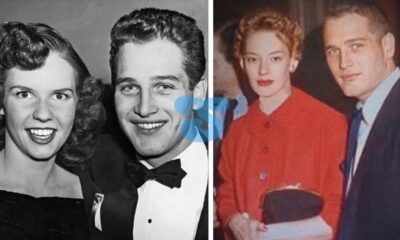
 Celebrity5 months ago
Celebrity5 months agoAll About Jackie Witte: The Untold Story of Paul Newman’s First Wife
-

 Celebrity4 months ago
Celebrity4 months agoWho Is Evelyn Melendez Knight? All About Jordan Knight’s Wife and Their Family
-

 Celebrity5 months ago
Celebrity5 months agoLaura Marie Holtzmann: A Closer Look at Joyce Meyer’s Daughter and Her Life
-

 Celebrity5 months ago
Celebrity5 months agoGraham Larson: A Talented Force Behind Cinematic Masterpieces
-
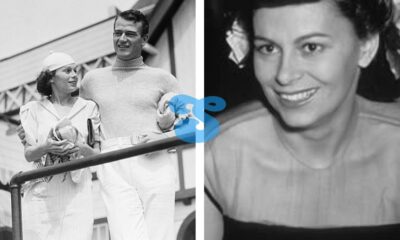
 Celebrity5 months ago
Celebrity5 months agoWho is Josephine Alicia Saenz? All About The First Wife of The Legendary Actor John Wayne
-
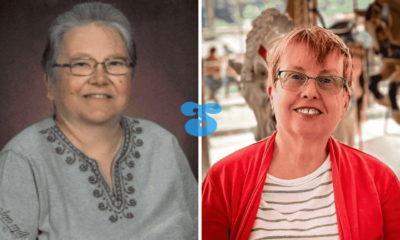
 Celebrity5 months ago
Celebrity5 months agoWho Is Janet Gayle? All About Gary Burghoff’s Ex-Wife
-

 Celebrity5 months ago
Celebrity5 months agoLearn About Abigail S Koppel: Attorney, Philanthropist, and Wife of Leslie Wexner


